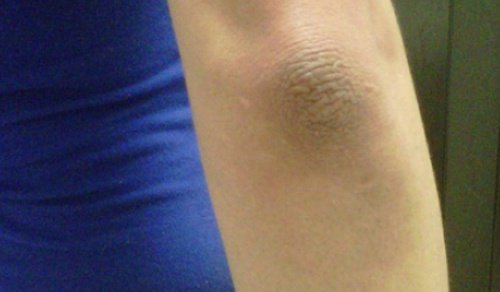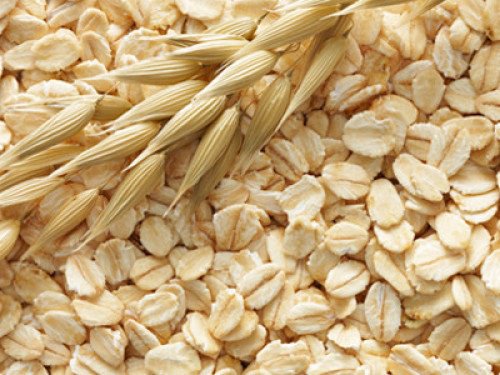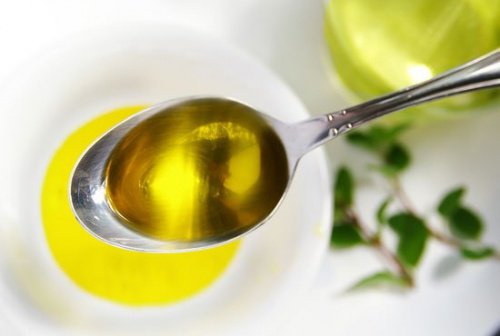Natural Remedies for Dark Elbows and Knees


Reviewed and approved by the doctor Karla Henríquez
As with other areas of your skin, the knees and elbows tend to darken over time due to the accumulation of dead cells and other impurities that adhere strongly to the skin. Although we sometimes forget theses two areas, if you take a look you’ll notice that these areas are darker than the rest of the skin. This is because we often use these areas for support and put them on surfaces without even thinking they could get dirty. This can lead to dark elbows and knees.
In addition to darkening over time, the knees and elbows also tend to dry out because they don’t have as many sebaceous glands. This may cause cracking, which makes it even easier for impurities to accumulate, making the skin look unpleasant in both tone and texture.
Even though dark skin is not a medical condition that affects your health, it’s unflattering. Luckily, there ways to lighten the skin of the knees and elbows naturally, exfoliating dead cells for a healthier appearance.
Also Read: Learn to Make Natural Oatmeal Soap
Baking soda
This all natural and economical product is easy to find and might help you remove dead cells and all types of impurities from the skin that cause it to appear darker.
Instructions:
- To reap its benefits, just mix some baking soda with a little water to make a thick paste.
- Gently massage the paste on the elbows and knees for 5 minutes. Then apply again and rinse with warm water.
- You can rub with a little force in these two areas because they’re strong enough to take it without becoming irritated.
- It’s important to hydrate these areas after treatment to prevent dryness.
- Repeat 2 or 3 times a week.
Oatmeal

Instructions:
- Mix two tablespoons oatmeal flour with two teaspoons fresh cream or milk.
- Apply in circular motions and let work for a few minutes.
- Rub for ten more minutes and then rinse with cold water.
- After treatment, apply a hydrating cream.
Petroleum jelly
Although petroleum jelly doesn’t exactly work as a natural exfoliant, it’s both hydrating and clarifying. Use it after exfoliating to enhance lightening effects.
Read also: Natural Remedies for Foot Calluses and Corns
Instructions:
- Prepare a paste with powdered chickpeas and water and apply it to the knees and elbows.
- When the paste dries, rinse with cold water and dry thoroughly.
- Apply a generous amount of petroleum jelly.
- Wrap the knees and elbows with gauze or a bandage and let the petroleum jelly work overnight while you sleep.
Olive oil

This natural ingredient can help dark elbows and knees by hydrating and preventing dryness.
Instructions:
- Warm a little olive oil and apply to the knees and elbows.
- Rub the oil into the skin at night before going to bed.
- Repeat 3 times a week for best results.
- You can also use coconut oil or vitamin E instead.
Lemon may help with dark elbows
Lemon is both astringent and clarifying. It can help remove dark marks from the knees and elbows if used often.
Instructions:
- Wash the elbows and knees and use a lemon to rub the affected areas in smooth circular motions.
- Massage for 10 minutes with the lemon and then let dry.
- Repeat daily.
- You can also mix with salt or sugar to create an exfoliant to remove dead cells. Just mix one part lemon with two parts sugar or salt and apply to the knees and elbows in circular motions. Let work for a few minutes then rinse with cold water.
All cited sources were thoroughly reviewed by our team to ensure their quality, reliability, currency, and validity. The bibliography of this article was considered reliable and of academic or scientific accuracy.
- Ali Sh. A, Galgut J.M, Choudhary R. K. On the novel action of melanolysis by a leaf extract of Aloe vera and its active ingredient aloine, potent skin depigmenting agents. Planta Medica. Mayo 2012. 78 (8): 767-71.
- Bertucci G, Tirillini B, et al. Antioxidative action of citrus limonum essential oil on skin. European Journal of Medicinal Plants. 2013. 3 (1): 1-9.
- Cia-Xia T, Mao L. et al. Curcumin inhibits melanogenesis in human melanocytes. Phytotherapy Research. Febrero 2012. 26 (2): 174-9.
- Das Sh. Hiperpigmentación. Manual MSD. Enero 2021.
- Ilnitska O, Kaur S, et al. (2016). Colloidal Oatmeal (Avena Sativa) Improves Skin Barrier Through Multi-Therapy Activity. Journal of drugs in dermatology, 15(6), 684-690. https://www.ncbi.nlm.nih.gov/pubmed/27272074.
- Journal of the American Academy of Dermatology. https://www.sciencedirect.com/science/article/pii/S0190962294701288.
- Murzaku, E. C., Bronsnick, T., & Rao, B. K. (2014). Diet in dermatology. Journal of the American Academy of Dermatology. https://doi.org/10.1016/j.jaad.2014.06.016.
- Reynertson, K. A., Garay, M., Nebus, J., Chon, S., Kaur, S., Mahmood, K. et al. Anti-inflammatory activities of colloidal oatmeal (Avena sativa) contribute to the effectiveness of oats in treatment of itch associated with dry, irritated skin. Journal of drugs in dermatology, 14(1), 43-8. https://www.ncbi.nlm.nih.gov/pubmed/25607907.
- Slim, S., Ben-Hlima, H., Jarraya, R., Kamoun, N., Ellouze, R. & Mohamed, D. (2012). Cosmetic emulsion from virgin olive oil: Formulation and bio-physical evaluation. African Journal of Biotechnology, 11(40), 8417-8424. https://doi.org/10.5897/ajb12.163.
- Telang, P. (2013). Vitamin C in dermatology. Indian Dermatology Online Journal. https://doi.org/10.4103/2229-5178.110593.
This text is provided for informational purposes only and does not replace consultation with a professional. If in doubt, consult your specialist.








